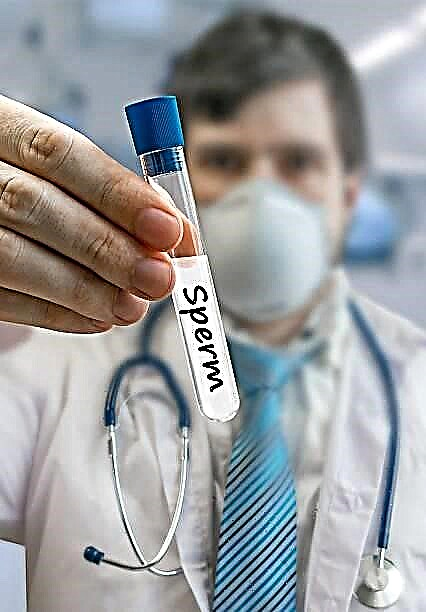
One of the most common abdominal pathologies in children is an inguinal hernia. It is usually detected at an early age, and the parents are faced with the fact of the need for treatment. At the same time, it is advisable to have a good idea of what exactly is happening to the child, and why it happened. In this article, we will answer these and other questions.

What it is
A childhood hernia in the groin is a condition in which the vaginal process of the peritoneum protrudes outward through the inguinal canal. What is looking for an exit through the inguinal canal is called a hernial sac. Inside he has parts of internal organs, for example, the bladder or intestines. The inguinal canal is a small gap in the groin area between muscle tissue and ligaments. Inside the gap in female children there is a round ligament of the uterus, and in boys there is a spermatic cord.
According to statistics, hernial formations in the groin are most often found in boys. The risk of developing such an ailment in them, according to various estimates, reaches 25-30%, while in girls it is only about 3%. According to pediatricians, for every girl with this diagnosis, there are 6 boys with a similar problem.
In premature babies, the risk of developing an inguinal hernia is significantly higher than in babies born on time. The risk of development in the first is at least 25%, in children who appeared on time - 5%.
Reasons for the appearance
A hernia in the groin is considered congenital, the acquired forms are the lot of adults and the elderly. In boys and girls, the prerequisites for the appearance of bumps in the groin area are always created even when they are in the mother's stomach.

In future boys, testicles form in the abdomen during the embryonic period. They begin to descend down to the inguinal canal only at 5-6 months of pregnancy. At the same time, they somewhat "pull" the peritoneum behind them. Finally, the testicle descends closer to childbirth, at the 9th month of pregnancy. The same tightened pocket from the peritoneum, which formed as a result of prolapse, is called the processus vaginalis.
Normally, it drags on completely by the time the boy is born. If for some reason this does not happen, the communication of the inguinal canal with the abdominal cavity remains open. This can lead to the fact that a loop of intestine or other internal organ can go along the path that the testicle passed. This is what will become a hernia in the groin.

If with boys everything is more or less clear, then with the mechanisms of the appearance of a hernia in girls, more questions usually arise. The answers lie in the anatomical features of the female embryo. In girls, the uterus is also not in its place from the very beginning. First, this important reproductive organ is laid and formed much higher than expected. And then, from about 4-5 months of pregnancy, the uterus begins its way down, in a similar way, pulling a part of the peritoneum with it.
A similar processus vaginalis remains behind it. And if by the time of birth the message with the abdominal cavity is not closed, the exit of the hernial sac is not excluded. Thus, it becomes clear why inguinal hernias are five times more common in premature babies than in full-term babies.

But the risk of occurrence and the hernia itself as a fact are not the same thing. There may be a risk, but no hernia.
The most common reasons why the hernial sac still bulges outward are as follows:
- genetic predisposition to peritoneal weakness;
- cystic neoplasms of the spermatic cord;
- hydrocele (dropsy of the testicle);
- dysplasia of the hip joint;
- hernial formations of the spinal cord, problems with the spine.
Hernias later (after 9-10 years) appear in the groin very rarely, and they may have a different root cause than in newborns and infants. With the congenital predisposition described above, inguinal hernias may appear in children with severe obesity, in children who lead an inactive lifestyle, move little, do not play sports, those who suffer from frequent and severe constipation, as well as respiratory diseases associated with with severe chronic cough.


Classification
Depending on which side the hernia appeared on, it is classified as right-sided or left-sided. Right-sided ones are more common in boys, little princesses rarely suffer from such localization of the hernial sac. Hernial formations on the left in the groin area are recorded in a third of all cases.
On both sides, a hernia in the vast majority of cases appears in girls at the same time. Bilateral hernia in male children is found in about 12% of cases.
Like many other hernial formations, the inguinal is also divided into oblique and straight. Obliques enter the inguinal canal, completely repeating the path of the testicle at the perinatal age - from above with passing through the inguinal ring. Hernias of a direct type in children are very rare, with them the hernia bag comes out through the peritoneum.

For boys, a separate type of disease stands apart - scrotal or inguinal-scrotal hernia.

According to the mobility or immobility of the bag, the following are distinguished:
- strangulated hernia;
- an elastically restrained hernia;
- hernia with fecal entrapment:
- a hernia with a pinched Richter (parietal infringement of the bowel loop);
- a hernia with retrograde infringement (when two or more organs are pinched);
- undisturbed.
It is possible to correct only unrestrained inguinal hernias. All types of pinching are subject to treatment with the use of operative surgical procedures.
Dangers and complications
The main danger of an inguinal hernia lies precisely in the probability of its infringement. What it will be - no one undertakes to predict. With the fecal type of pathology, infringement occurs due to the overcrowding of the intestinal loop, which has fallen into the sac, with feces, with retrograde - not only the intestinal splash, which is in the bag, but also the intestinal splash, which is in the abdominal cavity, is compressed.
In all cases of pinching, without exception, the child needs immediate and urgent surgical care. Infringement, no matter what type it develops, is associated with insufficient blood supply in the squeezed organ, which quite quickly (sometimes in several hours) can lead to tissue death and necrosis. Even in our advanced age with operative medicine, doctors register cases of gangrene of strangulated organs in 10% of cases. Deaths account for approximately 3.9%, with gangrene, the mortality rate is higher - from 20 to 35%.


Infringement is always acute. There is a strong unbearable pain in the groin area, nausea, and sometimes repeated vomiting, the hernia becomes uncontrollable, the deterioration of health grows very quickly. Delay and self-medication attempts are dangerous. We urgently need to deliver the little patient to the surgical hospital.
In fairness, it should be noted that in childhood, most inguinal hernias are not complicated by infringement. But the parents of a child who was diagnosed with such a diagnosis and who cannot decide on an operation should be prepared for such a turn of events. The older the child gets, the higher the risk of being pinched.
Symptoms and Signs
An acute condition associated with infringement is not difficult to diagnose. It is much more difficult to find an inguinal hernia before it is complicated by an infringement. The fact is that the only symptom is the formation of the hernia itself in the groin. It looks like a round or irregular seal, slightly protruding.
The pathology is easiest to notice in babies. For example, in children under one year old, a one-year-old child whose parents regularly change clothes, bathe, a hernia will be visualized at moments of strong crying, screaming, during a cough. In a calm state, when the child does not strain the abdominal wall, or in a dream, the baby will not notice a hernia.


The location of the sac for scrotal hernia in boys is inside the scrotum, so it will be she who will be deformed. In girls, a hernia usually prefers to descend into the labia, as a result, there is a strong increase in one labia compared to the other. With bilateral pathology, both lips will be unnaturally large.
In children 5-6-7 years old and older, finding a hernia can be more difficult, because parents no longer have access to all parts of the child's body for ethical reasons. But such children can verbally communicate what worries them. Complaints of aching pain in the lower abdomen, as well as pain and a feeling of fullness in the scrotum and groin after a long walk, run, cannot be ignored.


An unrestrained hernia should not bother the child too much.
Symptoms that should compel parents to urgently send the child to the hospital are as follows:
- swelling of the abdomen, lack of gas discharge;
- intensification of the nature of pain in the groin area - from tingling and pulling sensations to acute pain;
- the hernial sac becomes hard, tense and motionless, touching it causes severe pain in the child.
Diagnostics
Usually, an inguinal hernia can be detected in the first months of a child's life. Often it is found by the parents themselves, in other cases - by the pediatric surgeon at the next scheduled examination at the clinic. It is customary to examine a child from birth to 1 year in a horizontal position.

Babies who are already 2 years old can be examined in a standing position, with a mandatory assessment of a hernia when the trunk is tilted forward. For children who are already 4 years old, the surgeon will give one more "task" - to cough, since with a cough reflex it is possible to examine the hernia in more detail and evaluate its size.
The doctor will compare whether the testicles in boys are symmetrical, what is the shape and size of the girl's labia, Then the doctor gives a referral for ultrasound. Boys do an ultrasound of the inguinal canal, girls - an ultrasound of the pelvic organs and abdominal cavity. Boys are additionally prescribed diaphanoscopy of the scrotum. This procedure is simple and painless, it consists in assessing how the organ is able to transmit light rays through itself. This method allows you to establish or disprove dropsy of the testicles as a possible root cause of a hernia in the groin.

When an ultrasound scan shows that a part of the bladder has fallen into the hernia sac, a cystography will be prescribed - a procedure in which a special substance is injected into the bladder, which is then clearly distinguishable on an X-ray, this allows you to examine in detail the state of the clamped organ. Irrigoscopy is prescribed in the event that it is established based on the results of an ultrasound scan that an intestinal loop is present in the contents of the bag. A contrasting solution is injected into the rectum using an enema, after which an x-ray is taken to assess the features of the restrained organ.

Treatment
With regard to inguinal hernias, doctors are usually quite categorical and offer surgical removal of the hernial sac as a treatment. Indeed, there are risks of complications, and by and large there is no point in maintaining a hernia.
An inguinal hernia will not go away on its own, as it happens with an umbilical hernia in babies.
The processus vaginalis by itself, by analogy with the umbilical ring, will not be tightened or overgrown. If this did not happen at the time of birth, then doctors should act further. It is not worth sticking with a plaster, hoping for the help of a special bandage, you need to do an operation. An operation called herniorrhaphy is the only possible solution to the problem. However, statistics show that about 10% of patients after such an operation experience genitofemoral pain syndrome. Therefore, children with unrestrained hernias of small sizes are given a "respite" by choosing the method of vigilant waiting.
The operation itself is considered not the most difficult, even a novice surgeon can carry it out (This is what often happens in reality, it is at hernia repair that yesterday's graduates of medical universities receive their first "baptism of fire"). Therefore, parents who, naturally, are worried about the consequences of surgery, should inquire about the qualifications of a specialist before performing a planned operation. For children, surgery is performed under general anesthesia. Doctors first access the inguinal canal through an incision, then locate the hernial sac and remove it. After that, the inguinal canal is sutured to its normal, natural size, and in case of its destruction, the canal plastic is done.

The hernia can be closed with a mesh if it was possible to correct it during the operation and do without removal. Operations are most often tried to be carried out by an incomplete method. To do this, use the capabilities of laparoscopy. Laparotomy (incision of the abdominal wall) is performed only when part of the intestine is not viable due to the infringement of the hernia and must be removed. After laparoscopic surgery, children quickly recover, after a few hours they rise, the recovery period is short. The likelihood of recurrence is about 1-3%. Uncomplicated small hernias in the groin of children are removed as planned, the child can be discharged home with normal health after 3-4 hours.
Doctors assess the forecasts as conditionally favorable. If the operation was carried out correctly, and the patient will subsequently comply with all appointments, it will be possible to forget about the inguinal hernia for the rest of his life.
Rehabilitation recommendations
After the operation, the child is shown physiotherapy exercises after about a month. You can do it on the basis of the exercise therapy office in the clinic at the place of residence. Exercises with balls, sticks, at the gymnastic wall are designed to help the child return to his usual life as soon as possible. In addition, such physical education accelerates the process of tissue regeneration in the area of surgical intervention, improves homeostasis, and strengthens the muscles of the abdominal wall.

Breathing exercises must be added to the set of exercises. 3-4 weeks after the operation, the child can engage in active walking (sports), skiing, visit the pool. Massage during this period is aimed at preventing disturbances of intestinal motility, strengthening the abdominal muscles. To do this, the child is massaged the back along the spinal column, massaging circular movements in the abdomen, around the navel, stroking the oblique abdominal muscles. You should always complete the massage with the lower body, stroking, and then kneading the legs.

Help the child and protect against possible relapses and special restraints that are worn after surgery - bandages. Children's bandages are not like adults, they need to be bought in specialized orthopedic salons, having previously asked the size and other design features of the product from the attending physician.
A bandage after an operation to remove an inguinal hernia is:
- left-sided;
- right-handed;
- bilateral.
The bandage comes with special inserts that are fixed in the place where there was (or is) a hernia. It should be understood that such orthopedic devices cannot cure a hernia in the groin, they only support the hernial sac from falling out and slightly reduce the risk of infringement. That is why we have placed information about bandages in the section on rehabilitation.


Reviews
The problems of diagnosing and treating a child's inguinal hernia are discussed at numerous parenting forums on the Internet.Most moms and dads note that older children can tolerate hernia surgery more easily, and they move actively the next day. Mothers of babies up to a year claim that they were discharged from the hospital a little later than older children, but no later than 4-5 days. It is advisable to take disposable diapers to the hospital with you, they will be useful to the child after the operation, when he will not be able to rise, and drinking water without gas.
Parents practically do not complain about relapses after surgery, but there are complaints about the diagnosticians. Quite often, according to reviews, when a child is hospitalized for an operation with one hernia, surgeons already in the operating room find two, or even three hernial sacs. For some children, both inguinal and umbilical hernias will be removed immediately. This does not negatively affect the state of health after the intervention, but requires a slightly different, extended set of measures in the rehabilitation process.
Children's surgeon Alexander Ivanovich Sumin will tell you about the dangerous inguinal hernia in the next video.



